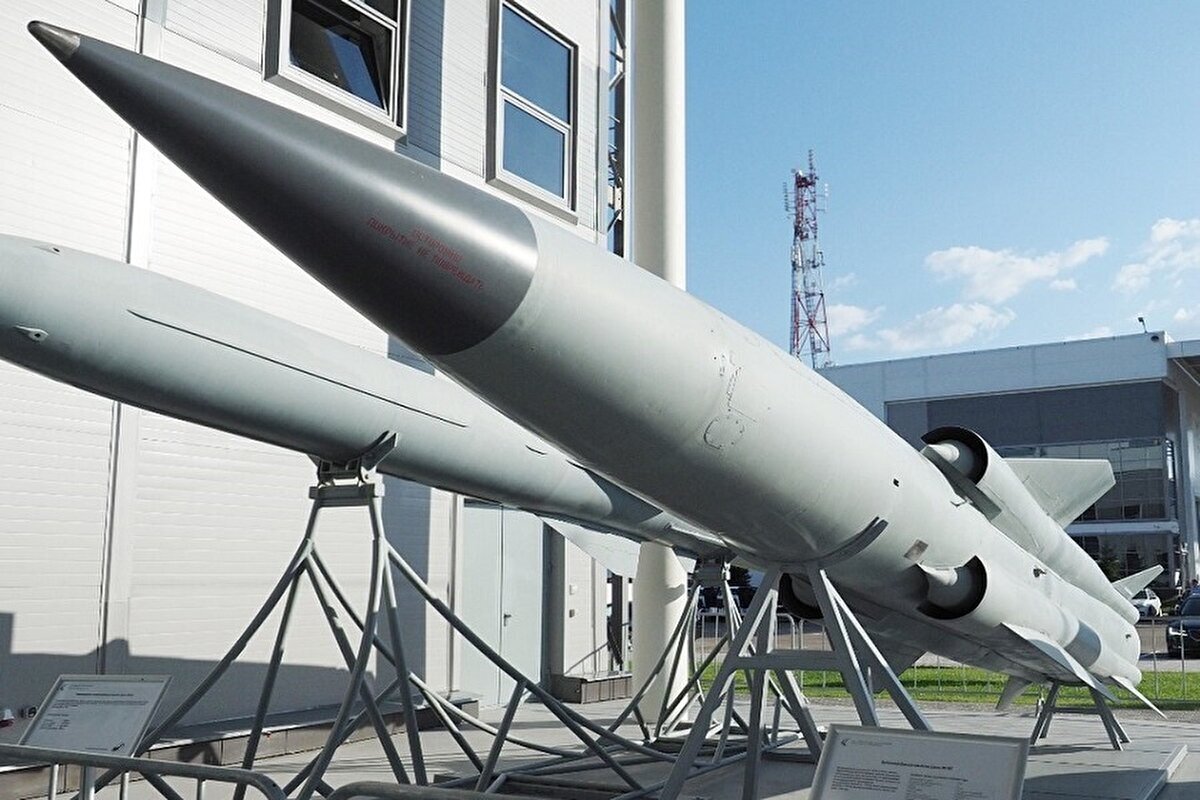Destroying Hostile Warships with the Sunburn Anti-Ship Missile
TEHRAN (Defapress) - Anti-ship missiles play a crucial role in ensuring the maritime security of nations, and the presence of such missiles deters foreign countries from coveting Iran's territory.

The Islamic Revolutionary Guard Corps Navy (IRGCN) and the Islamic Republic of Iran Army Navy are the primary guarantors of security in the Persian Gulf and the Sea of Oman. By utilizing advanced anti-ship missiles, they can stand against extra-regional forces and their expansionist ambitions.
One of the missiles used by the armed forces of the Islamic Republic of Iran which has an extraordinary ability to hit enemies is the "Sunburn; SSN-22" anti-ship missile.
Military analysts call this missile the "Warship Killer" due to its high capability to destroy naval warships. Various accounts exist regarding how this missile was integrated into the naval units of Iran's armed forces, but the narrative confirmed by a senior Iranian military commander appears more credible.
Field reports indicate that during Rear Admiral Ali Shamkhani’s (former Defense Minister) visit to Russia, this missile was tested in his presence, after which he ordered its purchase from the Russians.
In an interview published in December 2015 on websites, Rear Admiral Shamkhani discussed the procurement of the Sunburn missile and its addition to Iran's naval forces.
Regarding when this missile would be used, Shamkhani stated: "The operational deployment of this missile, and any other military capability in this domain, as well as decisions on its use, rest with senior military officials." If we were to list the features of this missile, it has demonstrated numerous remarkable characteristics.
Characteristics of the Sunburn Anti-Ship Missile
The "Sunburn" is a powerful missile, like hypersonic missiles, capable of striking heavy warships at high speeds. It can effectively demonstrate its capabilities in engagements with American coalition forces. The missile has a slender body, an egg-shaped nose, a broad rear section, 4 divided air intakes, and 4 clipped delta wings.
The Missile Defense Advocacy website states: The "P-270" (referring to the SSN-22 Sunburn, also known as Moskit) is a hypersonic cruise missile with medium-range capabilities. It is primarily ship-launched, though its upgraded versions can also be fired from coastal installations.
The site adds: The KH-41 is the air-launched variant, while the 3M80VE is the land-launched version of this powerful missile, developed by Russia. The Moskit P-270 (Sunburn) was first purchased and operationalized by China, followed by India.
Russia’s military used the Sunburn missile against small NATO groups in the Black Sea and the Baltic Sea. Additionally, these missiles can counter NATO amphibious assaults, highlighting the capabilities of this formidable Russian missile.
The powerful Sunburn anti-ship missile can operate on a large scale and strategically as a robust missile defense system. It can also serve as a defensive weapon on ships, enhancing the security of naval vessels.
The Archive website writes about this powerful anti-ship missile, which can be air-launched or coastal-fired: Its high speed distinguishes the Sunburn from comparable missiles like the Harpoon and Exocet. It also reduces the enemy’s defensive reaction time, making countermeasures extremely difficult, thereby establishing the Moskit as a highly successful weapon.
Field reports indicate that the Sunburn anti-ship missile reaches speeds of up to Mach 3. Considering Mach 1 as 1,225 km/h, its top speed is 3,675 km/h, an exceptionally high velocity for a missile.
Sunburn: A Missile for Heavy Strikes on Vessels
The Global Security website praises the Sunburn missile, stating: "This missile may have initially been designed to enhance the effectiveness of missile-equipped FAC (Fast Attack Craft) units and destroyer groups that previously relied on 'Malakhit' missiles. It is deployed on 'Sovremenny'-class destroyers (eight missiles each) and 'Tarantul'-class patrol ships, particularly the 'Tarantul III' (four missiles each). Its high supersonic speed reduces the time to hit predetermined targets. In reality, this weapon was specifically designed to attack ships equipped with the Aegis combat system and SM-2 surface-to-air missiles."
The Sunburn’s range varies across sources, but its effective range is cited as 80–110 nautical miles, making it suitable for close-range targets. Field reports suggest that heavy vessels weighing 20,000–30,000 tons can be completely destroyed by 4 to 5 of these missiles.
Given the above, it appears this missile is a powerful trump card for Iran’s armed forces, enabling them to disable enemy warships in any potential conflict which is fully aligning with the strategy of asymmetric warfare.
Additionally, reverse-engineering this missile (whose initial models were developed in 1984) could further threaten the security of enemy aircraft carriers and warships. Notably, the IRGCN recently showcased a multitude of cruise missiles in "missile cities," sending a clear message to adversaries that Iran’s armed forces are fully prepared to counter threats at any level.
